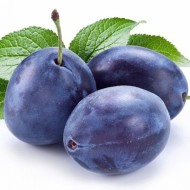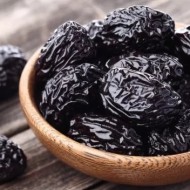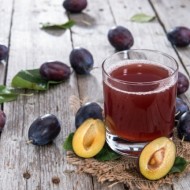The subtleties of growing high-yielding Stanley plum: advice and feedback from summer residents
Content
The history of the creation of the Stanley variety
Plum Stanley (from the English Stanley) is the result of crossing the American Grand Duke with the French Prunot d'Agen. Variety trials were carried out in 1912 at the Department of Horticulture, Cornell University (Geneva, New York, USA). The author of the variety is the American breeder Richard Wellington.
The Hungarian obtained as a result of the experiment took over the best qualities from the parental forms. So, from the French varietal plum Pruneau d'Agen, we managed to borrow the sweetness, captivating aroma and exquisite taste of the fruit. The American Grand Duke plum has imparted resistance to kidney freezing during late spring frosts.
The variety of American selection received mass distribution in 1926. The Stanley plum appeared in Russian gardening much later. And only in 1985, the fruit crop was added to the State Register of the Russian Federation, giving it the name Stanley.
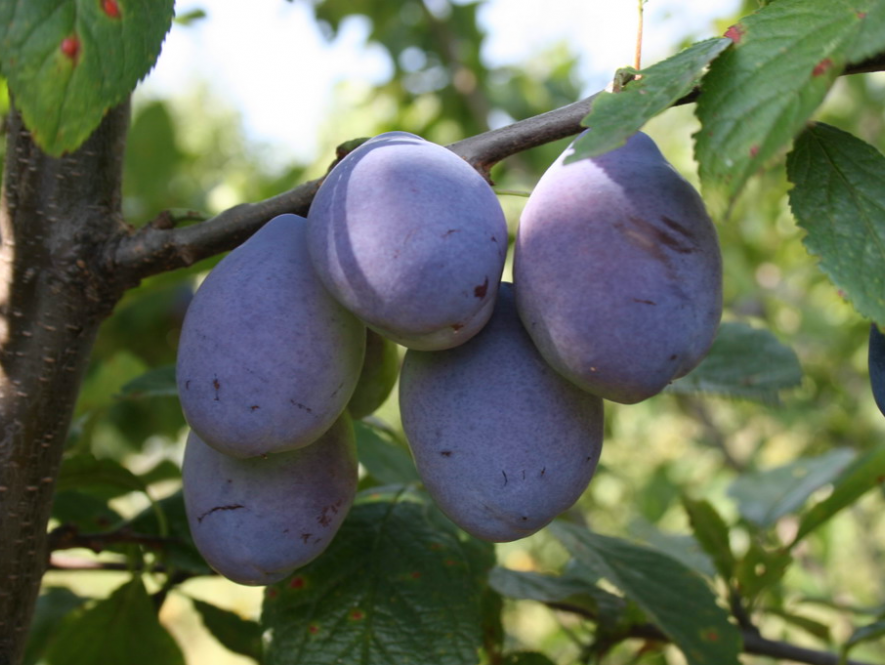
Description and characteristics of the plum
More than a hundred years have passed since the large-fruited plum was hatched. However, the Stanley variety does not lose its popularity.
Botanical portrait
Plum belongs to medium-sized fruit crops. The maximum tree height is 3 m. The crown is sparse, round. The straight stem has an average degree of peeling, while the color of the bark can vary from dark brown to dark gray. Branches slightly ringed, no pubescence. The average length of internodes is 3–3.5 cm.
The bright green leaves have their own pigmentation, which many novice gardeners perceive as a sign of a fungal infection. The shape of the leaf plate is conical with a pointed tip. The average length of the leaf is 7.5 cm, the width is 5.5 cm. The outer surface of the leaf plate is glossy, moderately concave. The inner side has slight pubescence along the lateral and centrally located veins.

Drought resistance and frost resistance
Plum Stenley is loved for its excellent winter hardiness. The fruit crop tolerates a drop in air temperature down to -34 ° C.
With regard to drought tolerance, the variety does not tolerate the lack of moisture in the soil. With a prolonged absence of precipitation and irrigation, it can discard ovaries and fruits.
Pollination
As indicated in the description of the variety, Stenley plum belongs to self-pollinated fruit crops. But to increase fruiting and improve yields, additional planting of pollinators is recommended.Plums Voloshka, President, Lepotika, Chachakskaya best, Empress and Bluefri can act as pollinators.
Fruiting and productivity
The first fruiting begins 4 years after planting in a permanent place of growth.
It blooms early - in mid-April. You can harvest ripe plums at the very beginning of autumn. Since the crop bears fruit actively, the yield indicators are considered stable. Under favorable weather conditions and proper care, about 60 kg of ripe fruits are harvested from one adult tree.
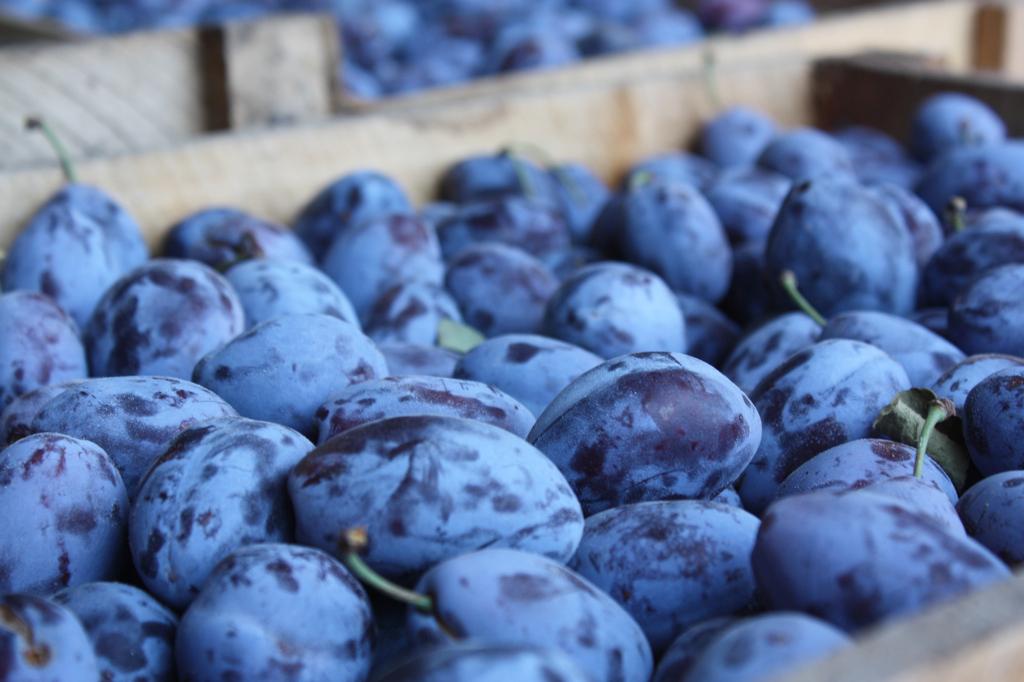
Taste and commercial qualities of fruits
The fruit of the Stenley variety is a large single-seed drupe. The average weight of a plum that has reached technical maturity is 40 g. The fruit is characterized by an obovate shape. The abdominal suture is clearly visible.
The skin of medium density is dark blue, almost black in color. There is an abundant bluish bloom. The pulp of the plum is greenish-yellow. A small oblong bone is easily separated from the pulp.
Stenley plums are sweet and aromatic, while the juiciness of the fruit is average. The fruits taken at the beginning of technical maturity have a slight sourness, which disappears as they mature.
Collection, storage and use of the crop
Depending on weather conditions, harvesting may take until the second decade of September. You can store plums in your home or cellar. The fruits do not lose their marketability and taste for 15-25 days.
Stenley plums are consumed fresh, and also used to prepare compotes, juices, jams and pastilles. The American variety is often used to make natural prunes at home.
Pros and cons of Stanley plum
Popular among gardeners, the Stanley plum has many advantages. However, it was not without some disadvantages of the variety, which are better known in advance.
- high winter hardiness;
- self-pollination;
- active fruiting and stable yield;
- excellent taste and market characteristics of fruits;
- versatility of fruit application;
- high transportability and no storage difficulties.
- late entry into fruiting;
- medium drought resistance;
- high requirements for soil fertility;
- low immunity to pathogens of fungal diseases.
Video "Acquaintance with the Stanley plum"
This video tells about the peculiarities of growing a fruit tree.
Growing rules and features
After reading the description and varietal characteristics, let's talk about the intricacies of growing a crop.
Requirements for location, lighting and ground
It is better to plant plum seedlings in open ground in early spring, until the period of active sap flow has begun. Autumn planting is not suitable for the Stanley variety. The tree does not have time to adapt to new growing conditions before the onset of cold weather.
Try to avoid areas with a close groundwater table. Low-lying terrain is not the best landing option. Despite the moisture-loving nature, the plum does not tolerate moisture stagnation.
It is equally important to choose the right "neighbors". For example, plum grows well and bears fruit actively next to apple, gooseberry, currant and raspberry. Pear, cherry and sweet cherry are considered to be bad "neighbors".
Plum of American selection loves nutritious and fertile soil. The best option is slightly alkaline and neutral acidity loam and sandy loam.
Landing algorithm
Planting a seedling is carried out in several stages:
- Preparation of a planting pit measuring 60x80 cm for fertile soil and 100x100 cm for infertile soil.
- Laying a drainage layer 10–15 cm high.
- Improving the fertile qualities of the soil - fertilizing.
- Deepening the seedling.In this case, the root collar remains above the ground.
- Abundant watering of the tree.
- Mulching the trunk circle.
Watering and fertilizing
Plum loves abundant and frequent watering. It is necessary to moisten the soil at least once a week. 10-15 liters of water are poured under one adult tree.
At the beginning of October, water-charging irrigation is required.
The higher the soil fertility, the better the yield indicators. For this reason, experienced gardeners offer the following scheme for feeding varietal plums.

Pruning and shaping the crown
Before the first fruiting, molding crown pruning is performed. In the future, the plum needs sanitary pruning. Every autumn, old branches, damaged by bad weather and injured by insects, birds and rodents, are removed from the tree.

Preparing for winter
Since the Stanley plum is considered a frost-resistant crop, the tree is not covered for the winter. The exception is young seedlings, which were planted this spring.
Disease and pest control measures
Plums are often affected by rust and moniliosis. Treatment of the crown with 1% Bordeaux liquid will help prevent the development of diseases. If it was not possible to prevent infection, it is worth spraying the plant with Nitrafen 2%.
The main pests of the varietal culture are considered to be the thickfoot, plum aphid, black and yellow plum sawflies. Effective methods of dealing with these harmful insects:

Reviews of summer residents about the Stanley drain
“Stanley plum is one of the few fruit crops that does not require special care. At the same time, the plant pleases with a consistently high yield ”.
“The Stanley plum has been growing in our garden for a long time. I recommend this variety to all beginners and professional gardeners who love homemade prunes. "
The Stenley variety is deservedly very popular among gardeners. The fruit culture, unpretentious to growing conditions, annually pleases with an abundant harvest of fragrant and tasty plums.

